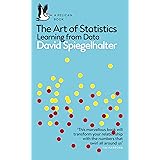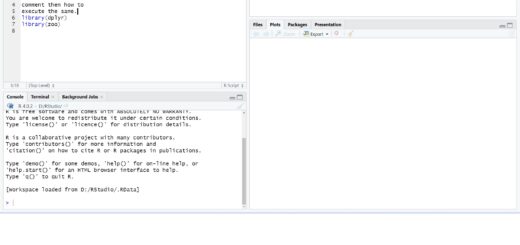Type II Errors in R: Hypothesis Testing
Type II Errors in R, we will explore errors in hypothesis testing, the different types of errors that can occur, and how to calculate them efficiently using R programming.
A hypothesis represents the assumptions we make to be true while formulating models for data analysis.
Type II Errors in R
Understanding errors in hypothesis testing is essential for making accurate conclusions in research and statistical analyses.
What is Error in Hypothesis Testing?
In the context of hypothesis testing, an error refers to the incorrect approval or rejection of a specific hypothesis. There are primarily two types of errors associated with hypothesis testing:
- Type I Error (Alpha Error): This error occurs when we reject the null hypothesis (H₀) when it is actually true. Type I errors are often referred to as false positives, similar to a medical test indicating a disease when the patient is healthy.
- Type II Error (Beta Error): This error occurs when we fail to reject the null hypothesis (H₀) when it is false, meaning the alternative hypothesis (H₁) is true. Type II errors are referred to as false negatives, akin to a medical test failing to detect a disease that is present.
Key Notations
- H₀ = Null Hypothesis
- H₁ = Alternative Hypothesis
- P(X) = Probability of event X
Mathematical Definitions
- Type I Error: The probability of rejecting H₀ when it is true is represented mathematically as:
P({Reject H₀ | H₀ True}) - Type II Error: The probability of failing to reject H₀ when it is false is expressed as:
P({Accept H₀ | H₀ False})
Real-World Example: Jury Decisions
To illustrate these concepts, consider a jury making a decision on a criminal case. The two possible hypotheses are:
- H₀: The convict is not guilty
- H₁: The convict is guilty
In this scenario:
- Type I Error: Convicting an innocent person (an innocent person is found guilty).
- Type II Error: Acquitting a guilty person (a guilty person is found not guilty).
Calculating Type II Error Using R Programming
Calculating Type II Error can be straightforward, and this article will guide you through the process using R programming.
The formula for Type II Error is:
P({Fail to Reject H₀ | H₀ False})
R Code to Calculate Type II Error
To compute Type II Error in R, you can use the following function:
# A small function to calculate the type II error in R
typeII.test <- function(mu0, TRUEmu, sigma, n, alpha, iterations = 10000) {
pvals <- rep(NA, iterations)
for(i in 1:iterations) {
temporary.sample <- rnorm(n = n, mean = TRUEmu, sd = sigma)
temporary.mean <- mean(temporary.sample)
temporary.sd <- sd(temporary.sample)
pvals[i] <- 1 - pt((temporary.mean - mu0) / (temporary.sd / sqrt(n)), df = n - 1)
}
return(mean(pvals >= alpha))
}Steps to Calculate Type II Error
- Run the Function: Copy the function into RStudio.
- Define Parameters: Specify your sample size, standard deviation, significance level, and assumed means.
- Execute the Function: Call the
typeII.testfunction with your parameters.
Example Calculation:
Here’s an example of calculating Type II Error:
# Sample size n = 10 # Standard deviation sigma = 3 # Significance level alpha = 0.03 # Hypothetical lower bound mu0 = 4 # Assumed actual mean TRUEmu = 10 # Applying the function typeII.test(mu0, TRUEmu, sigma, n, alpha, iterations = 10000)
Expected Output:
[1] 3e-04Exploring Variations
You can explore how different values affect the Type II Error by changing the parameters:
# New sample size n = 10 # New standard deviation sigma = 5 # Other parameters remain the same alpha = 0.03 mu0 = 4 TRUEmu = 10 # Applying the function again typeII.test(mu0, TRUEmu, sigma, n, alpha, iterations = 10000)
Conclusion
Understanding the types of errors in hypothesis testing and how to calculate them using R programming is crucial for researchers and analysts.
By accurately identifying Type I and Type II errors, you can make more informed decisions based on statistical analysis.
Using the provided R code, you can easily compute these errors, enhancing the rigor and reliability of your research findings.
Statistical Analysis» Statistics Methods » Quick Guide » FINNSTATS




